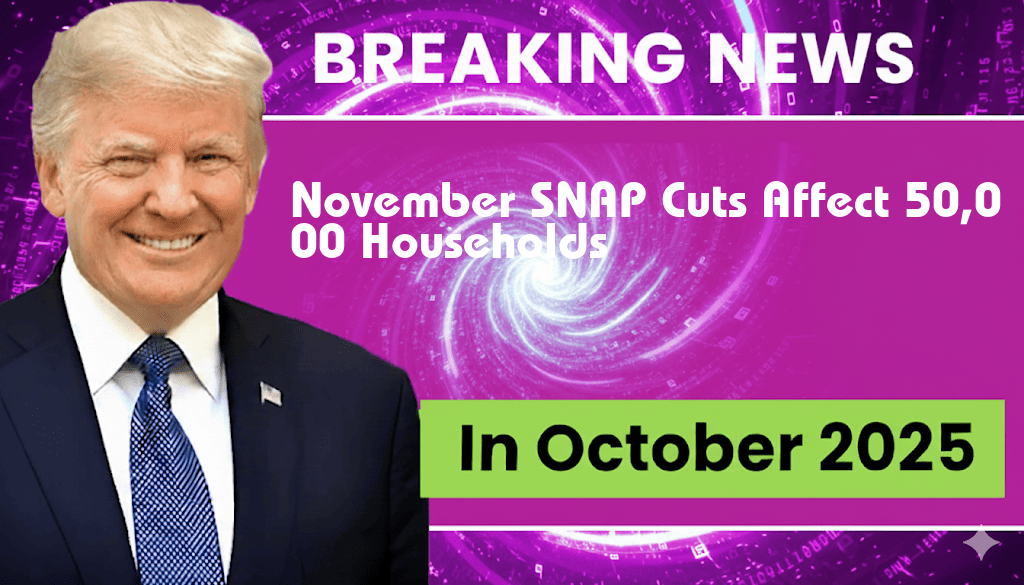November Sees $58 Monthly SNAP Reduction Impacting 50,000 Households
In November, approximately 50,000 households across the United States will experience a significant reduction in Supplemental Nutrition Assistance Program (SNAP) benefits, amounting to a decrease of $58 each month. This change impacts low-income families who rely on these benefits to help cover the cost of food. The reduction is a result of the expiration of temporary pandemic-related increases that were instituted to assist families during the COVID-19 crisis. As this financial support fades, many families may struggle to adjust to the new financial realities, raising concerns among advocates about food insecurity and the challenges faced by vulnerable populations.
Background on SNAP Benefits
The Supplemental Nutrition Assistance Program is a federal assistance program designed to provide nutritional support to low-income individuals and families. Benefits are typically issued through electronic benefit transfer (EBT) cards and can be used to purchase food at authorized retailers. In response to the pandemic, temporary increases in benefits were implemented to help households manage the economic fallout.
Details of the Reduction
The $58 monthly reduction is part of a broader trend as states begin to revert to pre-pandemic SNAP benefit levels. The emergency allotments allowed for increased monthly benefits were initially aimed at providing families with the means to cope during a time of unprecedented economic disruption. As these provisions phase out, many families are facing a stark decrease in their food budgets.
- Reduction Amount: $58 per month
- Households Affected: Approximately 50,000
- Effective Date: November 2023
- Previous Support: Emergency allotments during the COVID-19 pandemic
Impact on Households
Food assistance advocates express concern that the reduction in SNAP benefits will significantly impact food security for affected households. Many families are already grappling with rising food prices, which have surged due to inflation and supply chain issues. According to the USDA’s Economic Research Service, SNAP benefits helped lift an estimated 3.6 million people out of poverty in 2021 alone.
Responses from Advocacy Groups
Nonprofit organizations and food banks are preparing for increased demand as households adjust to the new benefit levels. Many organizations are ramping up outreach efforts to ensure that families are aware of additional food resources available to them. These resources include food pantries, meal programs, and community assistance initiatives.
“This reduction comes at a time when families can least afford it,” said Rachel Thompson, a spokesperson for the National Food Security Coalition. “We are urging policymakers to find ways to stabilize and enhance food assistance programs to support families during these challenging times.”
Potential Policy Changes
As the effects of the SNAP reduction unfold, there is a push among some lawmakers to reconsider the structure of the program. Advocates argue that a permanent increase in SNAP benefits could alleviate food insecurity for millions of Americans. Some proposals include adjusting benefits based on current food prices and the cost of living.
Conclusion
The $58 monthly reduction in SNAP benefits for 50,000 households marks a pivotal moment as many families grapple with the effects of diminished financial support. With food prices continuing to rise, the urgency for effective policy solutions is more critical than ever. Stakeholders from various sectors are calling for a reevaluation of food assistance programs to better meet the needs of vulnerable populations.
Frequently Asked Questions
What is the recent change in SNAP benefits for November?
In November, there will be a $58 monthly reduction in SNAP benefits affecting approximately 50,000 households.
Why are SNAP benefits being reduced this November?
The reduction is part of an ongoing adjustment to reflect changes in economic conditions and funding allocations for the SNAP program.
Who will be affected by the SNAP reduction?
About 50,000 households will experience the $58 reduction in their SNAP benefits, impacting families who rely on this assistance for food security.
How can affected households adjust to the SNAP benefit reduction?
Affected households may need to explore additional resources such as food banks, community programs, or budgeting strategies to help manage the decreased benefits.
Is there any support available for those struggling with the SNAP reduction?
Yes, various local and national organizations offer support services, including food assistance programs and financial counseling, to help households cope with the reduction in SNAP benefits.
